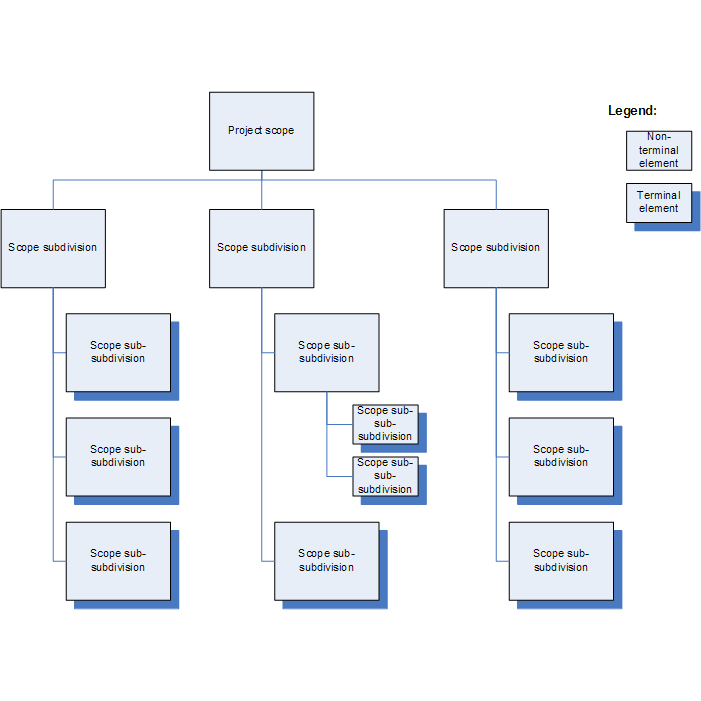 In the set of good practices in the Project Management Book of Knowledge (PMBOK), the sixth area of knowledge refers to human resources management within a project.
In the set of good practices in the Project Management Book of Knowledge (PMBOK), the sixth area of knowledge refers to human resources management within a project.
It is fundamental to perform human resource management of the organization to the highest standard. Good management will allow you to create high performance teams in each phase of the project. In this way, the maximum productivity of any company will be achieved: the efficiency of the available resources to achieve the proposed objectives.
In the field of projects, teams are created over a given period to collaborate intensively in the production of given objective. Due to the brevity of project teams, it is fundamental to master the processes to be able to manage resources, according to the following obligations:
- Correctly estimate the amount of human resources needed, based on task estimates
- Selecting staff with the right skills
- Plan the costs derived from the allocation of these resources
- Ensure that resources have sufficient time to devote to the project
- Control the time deviations to avoid any delays that can lead to non-expendable costs
Plan the allocation of your resources to all your projects with ITM Platform
Next, we review the steps for project resource planning.
1. Estimating resources
In estimating your resources, firstly a forecast of internal and external resources is made that will be needed for the management of the project. It is necessary to contemplate the active estimation for each task, activity and phase of development, so that the deployment is carried out efficiently.
Among the most common techniques for estimating resources is the consultation of experts, that is, based on the experience that has been acquired in previous projects. Data and results achieved in the past will help improve the accuracy of the current project.
2. Data collection
It is this phase in which the available resources for subsequent management are detailed, and usually includes information regarding:
- Available resources.
- Resource demand.
- In what way the available resources will be able to satisfy the demand raised.
3. Resource Plan
In project management, a plan should be prepared that addresses the different aspects, from the needs of the demand, the assignment of roles and responsibilities, and the desired results.
As head of the project you can create a list sorted by hierarchies in which the resources necessary for the execution and management of the project are displayed so as to be able to divide, delegate and assign responsibilities and functions.
Learn how to plan your resources here with ITM Platform
4. Development planning
All the information gathered in the initial phase will lay the foundations for further development planning. In this phase a schedule is created which indicates the establishment of the starting point and completion of all tasks, activities or works that will be developed in the project. This will create a final schedule, which will also include time management, which happens to be the third area of knowledge of the PMBOK referred to in the Guide.
The resource plan prepared before the development phase provides information on the hierarchical breakdown of the available resources, which are related or matched with the list of resources necessary for the development of the project. This exercise improves the efficiency in resource allocation that is needed for each activity.
5. Resource verification
The project manager is responsible for the project, so make sure that the assignments made allow the creation of high-performance teams capable of executing each phase of the plan correctly and efficiently. Taking into account remote workers, which is a typical occurence today.
In managing the human resources of a project, talent management is essential. Experience is a plus, and it is important to know the skills, competencies and abilities of all team members in the work group, which will improve the assignment of roles and responsibilities while achieving greater commitment and involvement.
In addition, as the project manager, director or coordinator, you must seek the balance between functionality and profitability. The allocation phase is fundamental, since if more resources are allocated than necessary, to a certain task or activity, it could implicate the financial resources of the company.
6. Negotiation of resources
Typically, companies use internal human resources to carry out smaller plans. At this point, the project manager must be able to negotiate if he wants to incorporate external resources into the project, for example in the case of a project where high specialization is required and the company has a more profitable to contract in place to create a team.
In any case, it is becoming more common for corporate human resources teams to focus on identifying talent within the same organization to improve the profitability of the activity and each new venture.
The management of project resources at a portfolio level
Project teams can never be managed in isolation, because members often spend their time among various projects. Therefore, it is imperative that someone in the organization has a centralized view on the use of all resources. In the case of conflicts, there must be criteria for deciding which project is allocated critical resources, so that the most important projects suffer the least delays possible.
Often, portfolio planning tools are used by a professional figure with greater authority than project managers, such as a PMO director, a project program director, or the portfolio director.
This article belongs to a series on the 10 areas of knowledge of PMBOK. Take a look at the articles already published:
The 10 areas of knowledge. 1: Project integration management
Integration with the ITM Platform Project Menu
The 10 areas of knowledge. 2: Project scope management
The 10 areas of knowledge. 3: Project Time Management

 The fifth area of knowledge of PMI's PMBOK refers to all activities and processes related to responsibilities, policies and quality objectives. Quality is a key pillar in project management.
The fifth area of knowledge of PMI's PMBOK refers to all activities and processes related to responsibilities, policies and quality objectives. Quality is a key pillar in project management.

 An area of knowledge is, according to PMBOK (Project Management Body of Knowledge), "an identified area of project management defined by its knowledge requirements and described in terms of its processes, practices, initial data, results, tools and techniques that compose them. " In fact, all project management processes contained in the PMBOK are divided into 10 areas.
An area of knowledge is, according to PMBOK (Project Management Body of Knowledge), "an identified area of project management defined by its knowledge requirements and described in terms of its processes, practices, initial data, results, tools and techniques that compose them. " In fact, all project management processes contained in the PMBOK are divided into 10 areas.